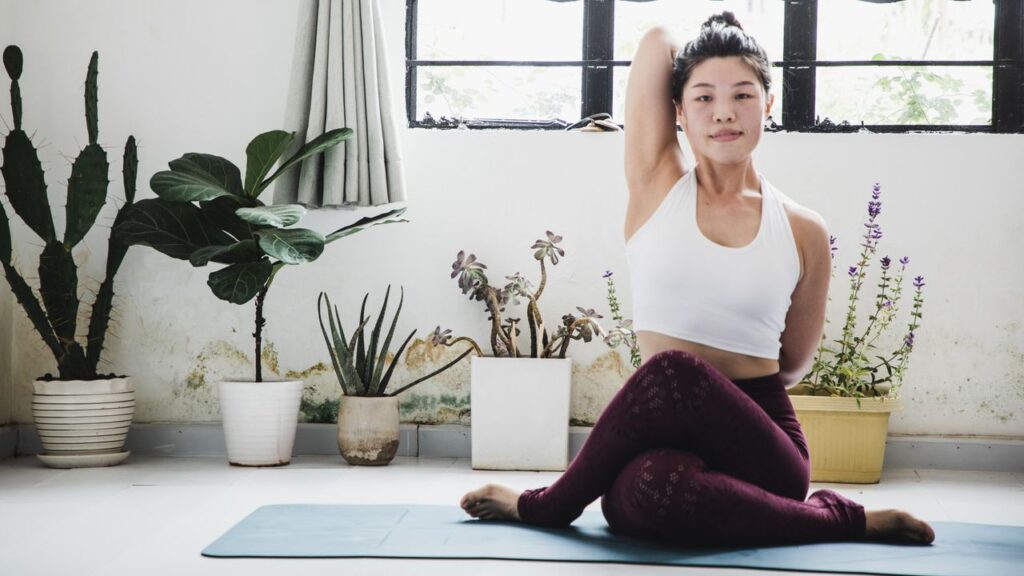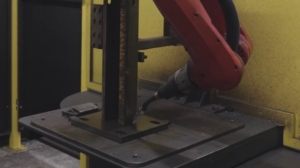
The cow-face pose, known as Gomukhasana in Sanskrit, has proven to be a beneficial stretch for individuals seeking to enhance their flexibility and relieve tension in the hips, glutes, and shoulders. A recent personal exploration of this pose revealed significant improvements in mobility and relaxation within just one week of dedicated practice.
Practicing cow-face pose involves sitting on the floor and stacking the knees while drawing the heels close to the body. This position aims to stretch the gluteal muscles and open the hips and shoulders. While the final shape of the pose is said to resemble a cow’s face, its practical benefits far outweigh aesthetic considerations.
For those who engage in rigorous physical activities, such as weightlifting, maintaining flexibility becomes crucial, particularly as the body ages. Many individuals experience tightness in their shoulders and hips, often exacerbated by neglecting warm-ups and cool-downs. This was certainly true for one practitioner who, after years of weightlifting, found her mobility compromised. To address this, she incorporated cow-face pose into her routine, practicing it twice daily for a week.
Understanding Cow-Face Pose
The cow-face pose is accessible to many, requiring only a yoga mat and a willingness to stretch. To perform the pose effectively, one should follow these steps:
1. Begin seated on the mat, crossing the right leg over the left and bending the knees so they stack on top of each other.
2. Draw the right heel close to the left hip and bend the left knee to bring the left heel near the right hip.
3. Sit tall, ensuring proper alignment of the spine.
4. Inhale and extend the right arm to the side, then exhale and bend it behind the back, palm facing away.
5. Inhale, reaching the left arm upward, and exhale as you bend the elbow, aiming to clasp the hands behind the back.
This stretch can be modified by sitting on a yoga block or using a strap if flexibility is limited.
Benefits of Daily Practice
After committing to this pose for just 30 seconds, twice a day, over the course of a week, the practitioner noted several benefits. The immediate effects included increased relaxation in the shoulders and a noticeable opening in the hips. This is particularly significant as cow-face pose targets the outer hips and glutes, which can often harbor tightness due to lifestyle habits.
The pose is also beneficial for posture improvement. By encouraging a tall spine and deep breathing, individuals can enhance their overall alignment and sense of height. Many practitioners report feeling taller and more aligned after each session, contributing to greater overall well-being.
In addition to physical benefits, the calming nature of the pose fosters relaxation and mindfulness. Connecting movement with breath is a vital aspect of yoga, and this pose serves as an excellent opportunity to focus on breathing techniques, promoting a sense of peace amid physical challenges.
While practicing, the individual noticed significant differences between her left and right sides, particularly in shoulder mobility and hip alignment. This highlighted the importance of symmetry in yoga practice. Observing these variances can lead to more informed adjustments and improvements over time.
For those new to cow-face pose, it is advisable to consult with a qualified yoga instructor to ensure safe practice and proper form. Additionally, modifications such as sitting on a pillow or chair can be explored to enhance comfort and effectiveness.
Ultimately, the cow-face pose has demonstrated its value as a tool for improving flexibility and relaxation. After just one week of consistent practice, the practitioner felt a renewed sense of mobility in her shoulders and hips. While it is essential to incorporate a variety of exercises for comprehensive mobility, cow-face pose stands out as an accessible and impactful option for many individuals.






